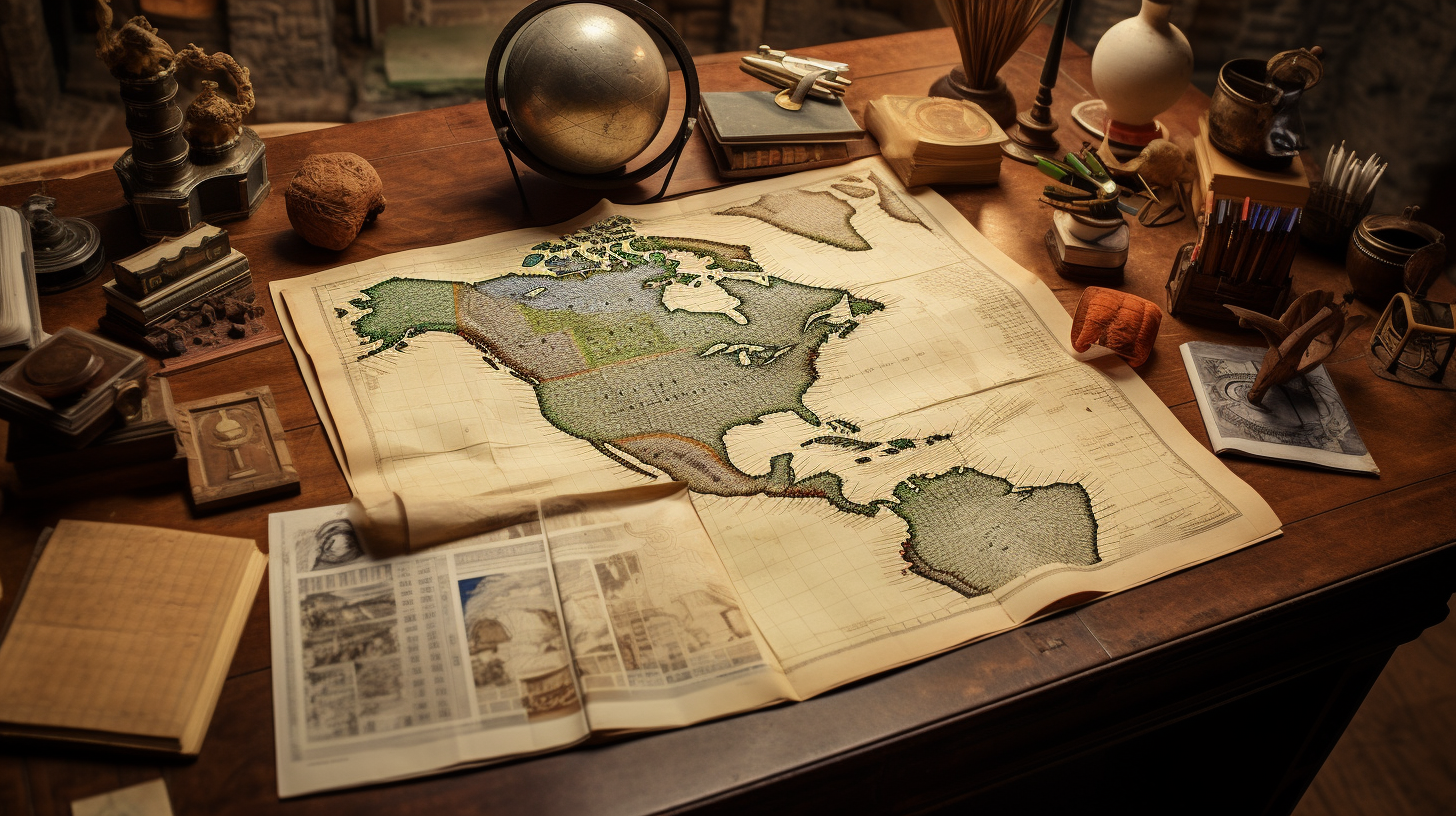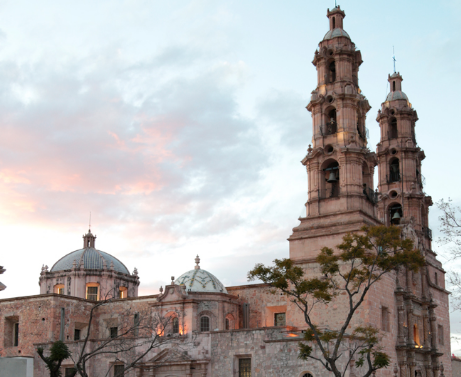
Articles

Mexican States
Southwest United States
Heritage and Governance
Mexican Colonial Migration as a Catalyst for Assimilation (1550-1821)
For centuries, Mexico has led the world in silver production. In 1546, during Mexico’s colonial period, silver was first discovered in Zacatecas, but many more mines would be opened up in the next two centuries. According to Michael M. Swann, “Migrants in the Mexican North,” the “silver centers attracted large, mixed populations from great distances.
Who Were the Chichimecas? Exploring Their Legacy
The nature of the so-called Chichimecas has varied in time and place. Originally the Spaniards and their Indigenous allies referred to the semi-nomadic people who inhabited the frontier area of Nueva Galicia as Chichimecas. They waged a 40-year-war against them. But two hundred years later, the Spaniards also used the term for the nomadic Coahuiltecan tribes of the northeast.
Lagos de Moreno: The Gateway to Jalisco
Lagos de Moreno, located in the northeast corner of the Mexican state of Jalisco, is an important commercial hub in the central Mexico region. While Aguascalientes lay eighty miles to the northwest, the city of Leon (in Guanajuato) is only forty miles to the east, and Mexico City is 445 miles to the south. Lagos de Moreno represents one of the twenty-four municipios that makes up the Los Altos region of Jalisco, an area that is defined by its socioeconomic and geographic nature and shares a common cultural history.
The Roots of the Luevano Family in Aguascalientes
Follow the fascinating genealogical journey of the Luevano family, from their Basque origins in Spain to their establishment in early Aguascalientes, Mexico. Trace 11 generations through centuries of marriages, migrations, and connections with other prominent colonial families, culminating in their migration to the United States during the Mexican Revolution.
The Ruvalcaba Lineage Report
The following lineage report traces the ancestors of Jose Geronimo Ruvalcaba (1817-1884) who lived in Rincón de Romos, Aguascalientes. As is the case for many inhabitants of Aguascalientes, he was a descendant of the Ruiz de Esparza and Rubalcava families that came to Mexico in the Sixteenth Century. The origins of the González de Rubalcava family will be discussed in greater detail at the end of the report.
Moctezuma’s Descendants in Aguascalientes
For many years, Aguascalientes and Nueva Galicia researchers have agreed that one branch of Moctezuma’s descendants ended up in Aguascalientes. However, the paper evidence for this theory has been difficult to assemble. And, at this point in time, there are still some gaps. It is believed that the researchers Guillermo Tovar de Teresa and Mariano Gonzalez-Leal have put together more detailed analysis on this lineage, but at this time, we will present what we have, which present parts of the picture.
The Native People of Nueva Vizcaya and Nueva Galicia
The following tables contain information of the native people of the Spanish jurisdictions in Nueva Galicia, Nueva Vizcaya, Sonora and Sinaloa. These extracts primarily contain information about the indigenous groups occupying these areas at the time of the Spanish contact, the year of which varies from one place to another. However, Peter Gerhard’s book contains a wealth of local information, and it is highly recommended that interested researchers purchase the book to have access to all the information provided.
Aguascalientes: Independence Sealed with a Kiss
The Mexican state of Aguascalientes (“Hot Waters”) is located in central Mexico. Surrounded by Zacatecas (on the north and west) and by Jalisco (on the south and east), Aguascalientes occupies 5,589 square kilometers, corresponding to only 0.3% of the Mexico’s surface area. Although it is one of the smallest Mexican states, Aguascalientes holds a position of great importance in the Mexican Republic, in large part because of its strategic location within the country. With its textile, electronics and auto parts industries, Aguascalientes represents an integral part of the Mexican economy.
Indigenous Aguascalientes: The Sixteenth Century Land of War
The State of Aguascalientes, located in central Mexico, is one of the smallest states in the Mexican Republic. Sharing its borders with Jalisco (on the south) and Zacatecas (on the north, west and east), Aguascalientes occupies a total of 5,616 square kilometers (2,168 square miles), which represents only 0.3% of Mexico’s national territory and is the twenty-eighth largest state in terms of area. Politically, Aguascalientes is divided into eleven municipios.
Who Were the Chichimecas?
If your ancestors are from Zacatecas, Guanajuato, Aguascalientes, Jalisco or San Luis Potosí, it is likely that you are descended from the indigenous peoples who inhabited these areas before the Spaniards arrived from the south. The historian Eric Van Young of the University of California at San Diego has called this area, the “the Center-West Region” of Mexico. This cultural region, according to Dr. Van Young, amounts to about one-tenth of Mexico’s present-day national territory.
The Rubalcaba Surname in Aguascalientes
Origins in Santander
The surname Rubalcaba (also spelled Robalcava or Ruvalcaba) is known to have originated in the Mountains of Santander, with branches of the surname radiating from Medina de Cudeyo, Liérganes and Navajeda, three locations that are presently located in eastern Cantabria (northern Spain). Today, Cantabria is considered an autonomous area with Santander as its capital. It is bordered on the east by the Basque Autonomous Community, on the south by Castile and León (the provinces of León, Palencia and Burgos), on the west by Asturias and on the north by the Cantabrian Sea.
Los Fundadores: Finding Your Spanish Ancestors in México
The following presentation offers suggestions for tracing your Mexican ancestors back to Spain or Portugal. Although we offer research suggestions and show the reader resources to locate ancestors from the Iberian Peninsula, it is important to state the following:
The Surname Orozco: From Vizcaya to Aguascalientes
The surname Orozco (or Orosco) is a surname that has been prominent throughout both Spain and Mexico over the last few centuries. According to Richard D. Woods and Grace Alvarez-Altman, “Spanish Surnames in the Southwestern United States: A Dictionary,” two elements form this surname: “oros” which means holly tree and the suffix “-ko” which suggests place. Orozco therefore means place of the holly trees. Orozco is also believed to have been derived from the Latin word “orosius” – the son of bringer of wisdom.
The Indigenous History of Jalisco, Zacatecas and Aguascalientes
Nueva Galicia’s Indigenous People: Established in 1548, the Spanish province of Nueva Galicia embraced 180,000 kilometers and included most of present-day Jalisco, Nayarit, Aguascalientes and Zacatecas.

Article Categories
- Aguascalientes 14
- Arizona 4
- Baja California 5
- Baja California Sur 2
- California 20
- Campeche 4
- Census 36
- Chiapas 3
- Chihuahua 11
- Coahuila 7
- Colima 1
- Conquistador Chronicles 2
- Durango 2
- Ethnic Identity 41
- Genealogy 35
- Guanajuato 8
- Guerrero 8
- Hidalgo 2
- Indigenous Insights 98
- Jalisco 25
- Mexico City 11
- Michoacan 7
- Morelos 4
- Nayarit 3
- New Mexico 4
- Nuevo Leon 7
- Oaxaca 6
- Politics 10
- Puebla 5
- Queretaro 1
- Quintana Roo 4
- San Luis Potosi 11
- Sinaloa 6
- Sonora 16
- Southwest US 26
- State of Mexico 5
- Tabasco 3
- Tamaulipas 11
- Texas 7
- Tlaxcala 7
- Veracruz 6
- Yucatan 6
- Zacatecas 13















